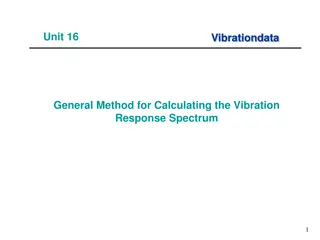Total Physical Response (TPR) Language Teaching Method Overview
Total Physical Response (TPR) is a language teaching method developed in 1977 by Dr. James Asher, emphasizing listening comprehension and physical actions to aid language learning. Asher's approach focuses on stress-free learning through commands and realia to connect speech with action, encouraging students to respond physically. The method allows for role reversal after several hours of instruction, fostering a fun and interactive language learning environment.
Download Presentation

Please find below an Image/Link to download the presentation.
The content on the website is provided AS IS for your information and personal use only. It may not be sold, licensed, or shared on other websites without obtaining consent from the author. Download presentation by click this link. If you encounter any issues during the download, it is possible that the publisher has removed the file from their server.
E N D
Presentation Transcript
Introduction TPR is a language teaching method developed in 1977 by Dr. James Asher, a professor of psychology. Asher developed TPR as a result of his experience observing children learning their first language. He noticed that interaction between parents and children take the form of speech from the parents and physical action from the children.
Asher made 3 hypotheses based on his observation : 1. Language is learned primarily through listening 2. Language learning must engage the right hemisphere of the brain since this part controls the nonverbal behaviour 3. Language learning should not involve any stress
TPR Approach. This approach gives importance to listening comprehension, learning starts with understanding and ends with production. Foreign language learning is similar to first language acquisition in that the baby spends many months listening to the people around it, trying to make sense of the sounds it hears, and no one enforces the baby to speak. The child chooses to speak when it is ready to do so. is based on the Comprehension and language
STEPS OF TEACHING 1. The teacher demonstrates meaning through realia and doing actions ( be a model ) 2. The teacher connects between speech and action 3. The teacher issues commands to the students, who should say nothing but should show they understand though responding physically
4. The teacher should give the students 3 connected commands ( called operation or action sequence ) at a time. When he/she is satisfied that the students master them, new commands should be presented. The order of the commands must be changed regularly in order not to memorize them by the students. Moreover, long commands can be made through combining two or three commands together.
5. Some commands can be humorous in order to alleviate students anxiety 6. The teacher should be tolerant to students errors. Corrections is made by repeating the command by the teacher in order to give the student the chance to self-correct 7. After 10 20 hours of instruction, role reversal would happen. The students start issuing the commands to the teacher and other students.
8. At the end of the class, the teacher writes the commands on the students questions 9. Give students assignment ( studying the commands ) board and answers
PRINCIPLES 1. Teacher s Objective (( To make students enjoy the experience of language learning, forget their fears and continue learning until they achieve proficiency. This is done through making them learn the language just like children acquire their native language ))
PRINCIPLES 2. Teacher s / Student s Role : The teacher : director of students behaviour A model The students : imitators After 10 20 hours, role reversal
PRINCIPLES 3. Characteristics of the teaching / learning process First Phase : Modeling Second Phase : The teacher recombines commands to help students understand unfamiliar commands Third Phase : Students read and write the commands. When they are ready to speak, they perform role reversal. Speaking activities may include skits ( dramatization ) and games.
PRINCIPLES 4. Interaction : The teacher starts the interaction to students either as groups or individually As students begin to speak, interaction will take the form of S T or S S 5. Students Feelings : Students anxiety is reduced through : Not forcing them to speak when they are not ready yet
When students begin to speak, perfection should not be expected Create an enjoyable atmosphere through zany ( comedian ) commands and humorous skits Not too much modeling. Students should do actions by themselves in order to feel successful 6. Language & Culture : Language is primarily learnt through understanding . Culture is the lifestyle of the language native speakers
PRINCIPLES 7. Language components / skills emphasized : Vocabulary and grammar come first. Grammar is taught through simple commands Why commands ? It is the form of language that frequently occurs while speaking to children Skills : understanding the spoken words comes before production Listening & writing come before speaking and reading
PRINCIPLES 8. Use of native language : Native language is used only in introducing TPR After the introduction, it should not be used. Meaning is made clear through body movements 9. Evaluation : Students understanding is measured through responding to teacher s commands. Formal evaluation is done through making students responding to a series of action. Advanced students are evaluated through the skits they create by themselves
PRINCIPLES 10 . Error Correction : Error are expected when students begin to speak Teachers should be tolerant and correct only the major ones With advanced students, teachers should correct the minor ones
TECHNIQUES 1. Using commands to direct behaviour 2. Role Reversal 3. Action Sequence
ADVANTAGES 1. It is fun, easy and memorable 2. It is good for building vocabulary 3. It does not require a great deal of preparation on the part of the teacher 4. It can be used with classes of mixed ability levels 5. It emphasizes the importance of listening in language learning
ADVANTAGES 6. Class size is not a problem 7. It can be suitable to all learners levels and ages
DISADVANTAGES 1. No space for communication 2. It is not a creative method 3. The grammatical structures that can be taught in this method are limited 4. It cannot be used as the main method in teaching language. It must be combined with other methods 5. Too much using of TPR causes boredom























